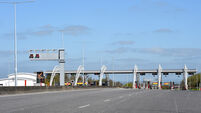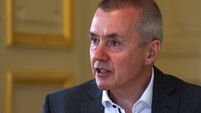David McNamara: The eurozone economy may be turning a corner at last

Eurozone data suggest some acceleration in growth in the currency bloc.
Last week’s macro data provided further evidence that the US economy is beginning to slow from the rapid pace of growth seen in 2023. The 1.6% annualised rise in GDP in the first quarter was well below the market consensus of 2.4% and reflected a broad-based slowdown in both domestic spending and net exports.
The data showed a weakening in consumer spending growth to 2.5% annualised, from 3.3% in Q4 2023, with US households buffeted by still-high inflation, a moderating trend in income growth, and exceptionally low levels of precautionary savings.
While a softening growth picture might be expected to boost expectations for rate cuts in the near term, the higher-than-expected rise in inflation in Q1 instead led to a slight firming in market rate expectations.
Core PCE inflation, the Fed’s favoured measure, came in higher than anticipated at 3.7% in Q1 (consensus 3.4%), and well ahead of the 2% rate in Q4 2023. While some of the drivers of recent sticky inflation may prove transitory, such as housing and insurance costs, the data have nonetheless hardened rate expectations, and underpinned a ‘stagflationary’ theme for the US economy in Q1.
What has now been several months of higher-than-expected CPI and PCE inflation prints in the US, could also give the Fed pause on its rate-cutting plans, ahead of its monetary policy meeting on May 1. In March, the Fed’s forecasts signalled 75 basis points of rate cuts in 2024, but media comments and speeches by key members since then suggest a more hawkish outlook for members in recent weeks.
In contrast, last week’s eurozone data suggest some acceleration in growth in the currency bloc. Flash PMIs for the eurozone pointed to a faster pace of private sector growth in April. The Composite Eurozone PMI rose to 51.4 from 50.3 in March, which was an 11-month high for the survey.
This rise was driven in particular by a continued bounce back in the German surveys, especially in the services sector. Indeed, there is growing evidence that the recently moribund German economy may have bottomed out, with consumer and business surveys released last week rising by more than expected in April, largely caused by brightening future expectations for the German economy.
The prospect of near-term ECB rates cuts may well be behind this turnaround in German sentiment, so it remains to be seen whether this upturn will translate to a durable rise in GDP growth for the eurozone’s largest economy.
Turning to the week ahead, the main focus will be on the upcoming Fed monetary policy decision, due after the European close on Wednesday. As mentioned above, since the last Fed meeting in March, US futures contracts pricing have moved significantly, amid signs that disinflation has stalled in Q1.
Furthermore, Fed officials have struck a more hawkish tone in recent weeks, with the overarching message being that rate cuts are unlikely until there is evidence that inflation is still moving back to target.














